Related Research Articles
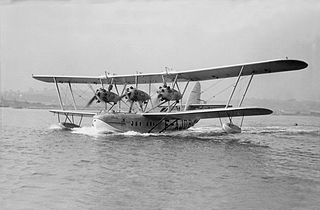
The Short Calcutta or S.8 was a civilian biplane airliner flying boat made by Short Brothers.

The Junkers Ju 86 was a German monoplane bomber and civilian airliner designed in the early 1930s, and employed by various air forces on both sides during World War II. The civilian model Ju 86B could carry ten passengers. Two were delivered to Swissair and five to Deutsche Luft Hansa. In addition a single civilian Ju 86Z was delivered to Sweden's AB Aerotransport.

The Handley Page HP.81 Hermes was a civilian airliner designed and produced by the British aircraft manufacturer Handley Page.

The Short S.45 Seaford was a 1940s flying boat, designed as a long range maritime patrol bomber for RAF Coastal Command. It was developed from the Short S.25 Sunderland, and initially ordered as "Sunderland Mark IV".
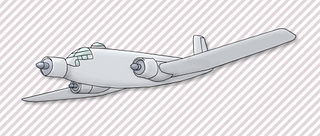
The Junkers Ju 352 Herkules was a German World War II transport aircraft that was developed from the Junkers Ju 252.

The Avro Type 688 Tudor was a British piston-engined airliner based on Avro's four-engine Lincoln bomber, itself a descendant of the famous Lancaster heavy bomber, and was Britain's first pressurised airliner. Customers saw the aircraft as little more than a pressurised DC-4, and few orders were forthcoming, important customers preferring to buy US aircraft. The tailwheel undercarriage layout was also dated and a disadvantage.

The Short S.26 G-class was a large transport flying boat designed and produced by the British aircraft manufacturer Short Brothers. It was designed to achieve a non-stop transatlantic capability, increasing the viability of long distant services/duties.
The Short Shetland was a British high-speed, long-range, four-engined flying boat built by Short Brothers at Rochester, Kent for use in the Second World War. It was designed to meet an Air Ministry requirement for a very-long range reconnaissance flying boat. The design used the company's experience with large scale production of the Short Sunderland. The end of World War II prevented the Shetland from entering production; it was the first aircraft designed with a 110 volt electrical system.
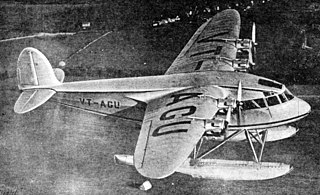
The Short S.22 Scion Senior was a 1930s British four-engined nine-passenger floatplane built by Short Brothers.

The Short Springbok was a two-seat, all-metal reconnaissance biplane produced for the British Air Ministry in the 1920s. All together six aircraft of the Springbok design were built but none entered service with the armed forces.
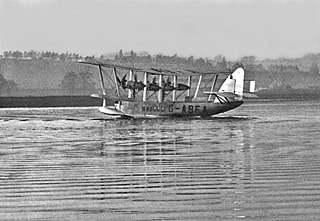
The Short S.17 Kent was a British four-engined 15-seat biplane luxury flying boat airliner, designed and built by Shorts to meet a requirement from Imperial Airways for an aircraft with greater range than the Short Calcutta. The new aircraft was to have sufficient range to fly the stage from Mirabella, Crete, to Alexandria in Egypt without the need for refuelling stops in Italian colonial territory due to a political row which had led the Italian Government to ban British aircraft from its ports.

The Short S.16 Scion and Scion II were 1930s British two-engine, cantilever monoplanes built by Short Brothers and by Pobjoy Airmotors and Aircraft Ltd. in Rochester, Kent between 1933 and 1937. Altogether 22 Scion/Scion II aircraft were built and they provided useful service to operators working from small airstrips/water courses in many parts of the globe, including Europe, the Near and Middle East, Sierra Leone, Papua New Guinea and Australia. Many were impressed into the Royal Air Force during the Second World War, providing pilot ferry services, anti-aircraft co-operation and radar calibration duties. Of the civilian Scions, at least two were still operating in Australia in 1966, one having been re-engined with de Havilland Gipsy Minor engines.

The Avro 652 was a 1930s British light airliner, built by A.V. Roe and Company. It was a twin-engine, low-wing monoplane with a retractable undercarriage, and a tailwheel. Although only two were produced, it formed the basis for the successful Avro Anson.

The Bristol Type 138 High Altitude Monoplane was a British high-altitude single-engine, low-wing monoplane research aircraft developed and produced by the Bristol Aeroplane Company during the 1930s. It set nine world altitude records, with the maximum altitude achieved being 53,937 ft (16,440 m) on 30 June 1937, during a 2¼-hour flight.
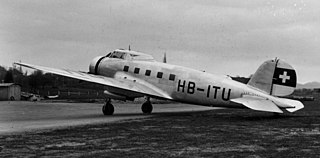
The General Aviation GA-43 was a single engine low-wing monoplane airliner produced in small numbers in the United States in the mid-1930s, also known as the Pilgrim 150, Fairchild 150, and sometimes but erroneously as the Clark GA-43 for the designer, Virginius E. Clark who was also responsible for the Clark Y airfoil section used.

The Manshū MT-1 Hayabusa was an airliner produced by the Japanese Manchuria Airplane Manufacturing Company in Manchukuo in the late 1930s. It was a conventional, low-wing cantilever monoplane with fixed tailwheel undercarriage. The flight deck was fully enclosed and separate from the passenger cabin, which could seat six people. The type equipped Manchukuo National Airways.
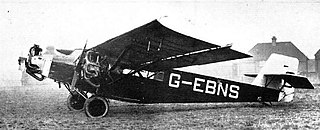
The Handley Page HP.32 Hamlet was a British six-passenger monoplane transport designed and built by Handley Page. Only one was built to order of the Air Ministry, first flown with three-engines, later changed to two then back to three engines.

The Breda Ba.32 was an Italian airliner prototype designed and built by the Breda company.

The Fairey FC1 was a British airliner project of the 1930s. Although an order was placed for 14 FC1s in 1938, work was stopped by the outbreak of the Second World War, and no examples were built.
The Bristol Type 159 was a British design for a four-engined heavy bomber by the Bristol Aeroplane Company, of Filton, Bristol. A mockup was built but the project was cancelled and no aircraft were built.
References
- ↑ Barnes, Christopher Henry, James, Derek N. (1989). Shorts Aircraft Since 1900. Naval Institute Press. pp. 341–344. ISBN 978-0851778198.
{{cite book}}: CS1 maint: multiple names: authors list (link) - ↑ Barnes 1967, p. 341.
- ↑ Brookes Flight 9 May 1958, p. 632.
- ↑ Jackson 1988, page 442
- 1 2 Barnes 1967, p. 344.
- ↑ Barnes 1967, p. 343.
- Barnes, C. H. (1967). Shorts Aircraft since 1900. London: Putnam.
- Brookes, Peter W. (9 May 1958). "Origins of the Modern Airliner: Part 3: In England and Germany, 1934–39". Flight . Vol. 73, no. 2572. p. 632.
- Jackson, A.J. (1974). British Civil Aircraft since 1919 Volume 3. London: Putnam. ISBN 0-370-10014-X.